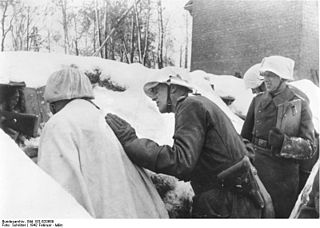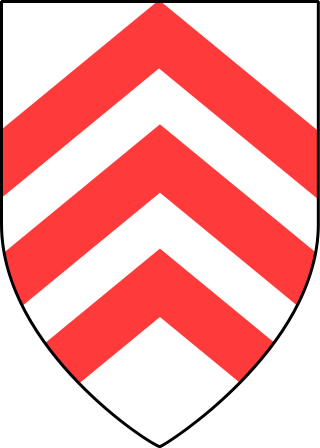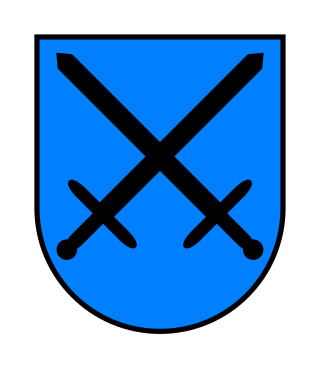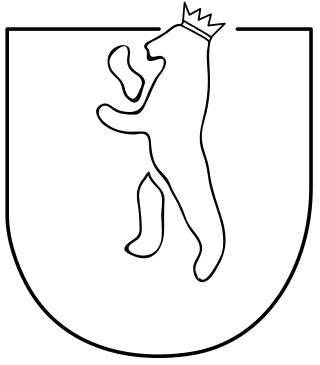
The 18th Army was a World War II field army in the German Wehrmacht.

Erich Abraham was a general in the Wehrmacht of Nazi Germany who command the 76th Infantry Division then the LXIII Corps on the Western Front during World War II. He was also a recipient of the Knight's Cross of the Iron Cross with Oak Leaves.

The 6th Infantry Division was a unit of the German Army during World War II.
The 320th Infantry Division was an infantry division of the German Wehrmacht. It existed from 1940 to 1944. In late 1944, the division was reassembled as the 320th Volksgrenadier Division.
Johannes Block was a German general in the Wehrmacht during World War II who held commands at division and corps level. He was a recipient of the Knight's Cross of the Iron Cross with Oak Leaves. Block was killed on 26 January 1945 near Kielce, Poland during the Soviet Vistula-Oder Offensive.

The 205th Infantry Division was a German infantry division of the Heer during the Second World War. It was initially known as the 14th Landwehr Division.

The 242nd Infantry Division was an infantry division of the German Army in World War II.

The 62nd Infantry Division was an infantry division of the German Heer during World War II. It was formed in Wehrkreis VIII (Silesia) in August 1939. After heavy casualties in March 1944, it was first briefly reassembled in August 1944 and then reorganized into the 62nd Volksgrenadier Division, formed from units assembled for the planned 583rd Volksgrenadier Division, on 22 September 1944. The dissolution of 62nd Infantry Division was declared on 9 October 1944. 62nd Volksgrenadier Division remained operational until it was trapped in the Ruhr Pocket and forced to surrender by American forces in April 1945.

The 211th Infantry Division was a German infantry division of the German Heer during World War II, active from 1939 to 1944.

The 223rd Infantry Division was an infantry division of the German Heer during World War II.
The 225th Infantry Division was an infantry division of the German Heer during World War II.
The 239th Infantry Division was an Infantry Division of the German Heer during World War II. The division was activated in 1939 and remained in active duty until December 1941. Its staff was formally dissolved in 1942.
The 245th Infantry Division was an infantry division of the German Heer during World War II. It was active between 1943 and 1945.

The XXVI Army Corps was a Wehrmacht army corps during World War II. It existed from 1939 to 1945. It was also known as Corps Wodrig during the Invasion of Poland.
The 166th Infantry Division was an infantry division of the German Heer during World War II. The unit, at times designated Commander of Reserve Troops 2 of Wehrkreis VI
The 168th Infantry Division was an infantry division of the German Heer during World War II. It was active between 1939 and 1945.

The 257th Infantry Division was an infantry division of the German Army during World War II.
The 262nd Infantry Division was an infantry division of the German Heer during World War II.
The 271st Infantry Division was an infantry division of the German Heer during World War II.
The 321st Infantry Division was an infantry division of the German Heer during World War II. Between November 1943 and June 1944, it was known as Division Group 321.









